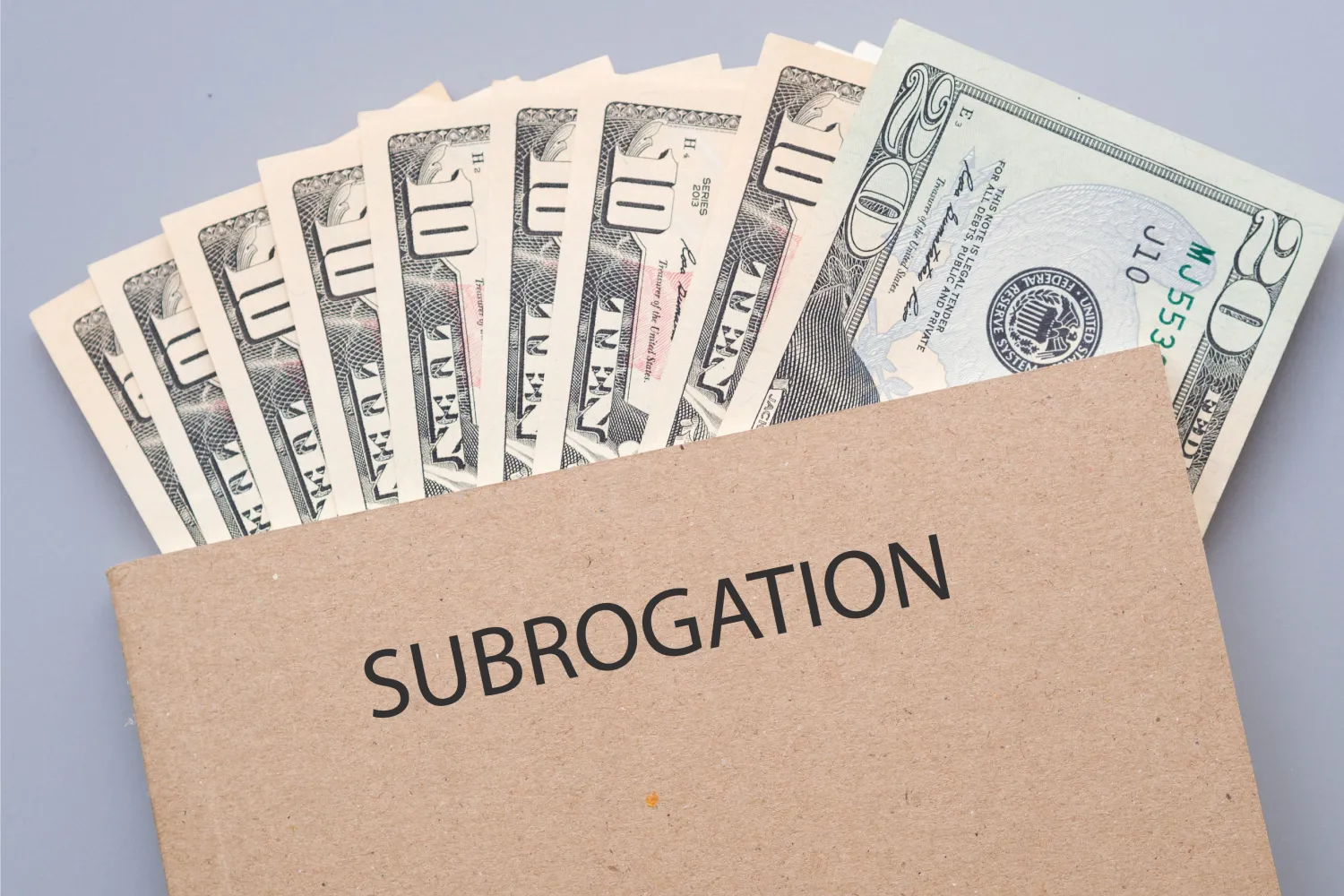In the majority of personal injury cases, damages are focused on bodily and/or financial harm(s) caused to the victim(s). However, many personal injuries, auto accidents, assaults, and comparable incidents do not stop with just bodily and financial harms. Oftentimes, in fact, they result in emotional distress and even post-traumatic stress disorder (PTSD).
In these cases, accident victims may wish to recover compensation for the emotional distress they have suffered. Given the intangible nature of emotional distress, though, they may not know whether they can sue for damages.
So, can you?
In short: Absolutely. With the right lawyers on your side, you can sue for emotional distress and recover additional damages from your lawsuit.
For a free case evaluation and more information, contact Schwartzapfel Lawyers today at 1-516-342-2200!
Emotional Distress Explained
In legal terms, emotional distress refers to mental anguish, suffering, or anxiety caused by a specific incident. For example, being in an auto accident may induce emotional distress in one or more parties. The incident can cause those parties to fear for their lives or safety, resulting in both physical and mental symptoms.
Emotional distress is technically a type of damage. Under certain circumstances, New York law allows incident victims to sue others for emotional distress. Specifically, New York law recognized two types of emotional distress: negligent infliction of emotional distress (NIED) and intentional infliction of emotional distress (IIED).
For the purposes of our analysis, we begin with the former: NIED.
Negligent Infliction of Emotional Distress
Negligent infliction of emotional distress involves any incident in which an individual or party’s negligence causes emotional distress in an accident victim. In the majority of NIED cases, there must be provable physical harm and/or damages in addition to mental or emotional damages for a plaintiff to recover compensation. There are, however, a few rare exceptions.
Imagine a scenario in which a drunk driver hits another legal driver, causing injuries such as broken bones or lacerations. Under these circumstances, the drunk driver was clearly negligent (since they were driving under the influence of alcohol) and caused physical damage to the victim as a result.
In this case, a knowledgeable lawyer may be able to help the accident victim recover damages not only for emotional distress but also for the physical injuries sustained in the accident.
How To Sue for Negligent Infliction of Emotional Distress
To successfully establish a claim and win a lawsuit for NIED, you must prove that the defendant or accused’s conduct or actions caused mental anguish to you specifically. In general, it is helpful to prove that physical injuries or damages accompanied those actions. Your legal representatives may advise you on this matter.
You must also prove that the defendant was in some way negligent in their behavior. For instance, driving while distracted (e.g., while texting) is an example of negligent driving. Similarly, a medical professional performing a surgery while inebriated is an example of negligent practice.
To sue successfully for negligent infliction of emotional distress, your case must meet these requirements:
- The conduct of the defendant has to have caused a physical contact or impact; OR
- The plaintiff was in the zone of danger” for the alleged negligent act(s); OR
- The defendant’s allegedly negligent conduct must have been foreseeably harmful to the plaintiff
Read on for more information about the zone of danger in New York. Alternatively, call Schwartzapfel Lawyers at 1-516-342-2200 and allow us the privilege of answering your emotional distress-related questions and more.
Intentional Infliction of Emotional Distress
Intentional infliction of emotional distress occurs when an individual or party, through their outrageous, extreme, and/or malicious behavior, intentionally causes emotional distress and/or bodily injury to another person or party. Intentionality is the deciding factor in these cases, meaning: the defendant’s conduct was purposeful in having a negative effect on the plaintiff’s mental health by causing emotional injury.
However, intentional infliction of emotional distress might allow for recoverable damages without bodily harm. Thus, there is a different level of evidence required for a successful lawsuit of this kind.
For example, imagine a scenario in which a defendant is accused of having sexually harassed the plaintiff. The defendant for the lawsuit is alleged to have made many comments at work to the plaintiff insinuating sexual acts or aggressive intent.
Even if the defendant never acted on their words or suggestions, the plaintiff in this case could have significant grounds for an emotional distress lawsuit. This is because the plaintiff may be able to prove that they suffered severe emotional distress due to the actions of the defendant.
Often, however, intentional infliction of emotional distress does accompany bodily harm or damages. For instance, if an individual causes intentional emotional harm to a pregnant woman, they may be held liable for bodily damages if the pregnant woman suffers pregnancy complications such as a miscarriage due to their words/actions.
How To Sue for Intentional Infliction of Emotional Distress
When filing a successful claim for intentional infliction of emotional distress, you have to prove that another individual or party was intentionally causing suffering and/or extreme emotional distress due to their conduct. Simple annoyances or rudeness will not qualify.
In other words, the accused’s intentional actions have to go beyond the bounds of decency and reasonable behavior. Note again, however, that it’s not necessary to have sustained bodily or financial harm to recover damages for IIED.
Some common examples of IIED that meet the threshold of intentional and malicious conduct include:
- False imprisonment
- Racial insults
- Sex discrimination or insults
- Insults or conduct that threaten physical security
Furthermore, to prove intentional infliction of emotional distress, your case must meet the following requirements:
- The alleged conduct of the defendant was extreme and/or outrageous
- The alleged conduct from the defendant was intentional (i.e., not negligent or ignorant)
- The conduct can be proven to have caused the injury(s) in question
- The victim suffered severe emotional/mental distress as a result
To learn more, speak with a Schwartzapfel Lawyers IIED expert now by dialing 1-516-342-2200. Note: While your consultation will be free, the advice provided to you can save you miles of headache, heartache, and financial strain down the road.
Zone of Danger” Lawsuits
The zone of danger” type of emotional distress claim is a legal concept followed by New York and several other states in the US. In short, the zone of danger” refers to a situation wherein someone could recover damages or financial compensation for having witnessed a traumatic event involving an immediate family member.
For instance, a person threatened with bodily harm may recover damages for emotional distress if they viewed the injury or death of an immediate family member, even if they were not personally harmed.
Here’s an example:
- A husband and wife are walking down the street late at night.
- They are intercepted by an aggressive individual who has a grievance with the husband for one reason or another.
- The aggressive individual states that he intends to fight the husband again and again.
- The aggressive individual punches the husband, causing physical injuries.
- While the husband can sue his attacker for bodily damages and, potentially, emotional distress, the wife can also sue the attacker because she is in the zone of danger. She witnessed an immediate family member be intentionally attacked and harmed by a person.
The zone of danger rule allows individuals to sue at-fault parties for emotional distress even if they were not the primary target(s).
To establish a successful emotional distress claim under the zone of danger rule, plaintiffs have to prove that:
- There was a possibility that they could have been injured or killed in the incident alongside their loved one/family member.
- The plaintiff was aware of the injury and/or death of the loved one.
- The injury was sustained by the plaintiff’s immediate family member, such as a parent, child, or sibling.
- The plaintiff suffered an emotional injury from witnessing the incident.
Statute of Limitations for Emotional Distress Lawsuits
It’s important to contact knowledgeable legal professionals if you decide to sue for emotional distress. That’s because the statute of limitations for intentional infliction of emotional distress is one year from the time of the incident. The statute of limitations is the same for negligent infliction of emotional distress (NIED).
As such, for a claim to be successful it must be filed by the plaintiff within a year of the injuring incident(s). This can be difficult if you are unfamiliar with the legal process or don’t know how to start your case.
Here, educated legal professionals can help you by:
- Gathering important evidence on your behalf
- Fighting for you in and outside of court
- Negotiating with insurance companies or the defendant’s legal team
- And more!
For more information and a free case evaluation, contact Schwartzapfel Lawyers today at 1-516-342-2200.
What To Do if You’ve Experienced Emotional Trauma
If you or a loved one has experienced emotional pain and suffering because of someone else’s wrongdoing, hiring the right personal injury attorney can make all the difference in recovering the damages you are entitled to. That said, there are several steps you should take before even thinking about hiring legal representation. When dealing with emotional distress damages in particular, you should first:
- Get yourself and anyone else involved out of harm’s way, but only if it is safe to do so. This is especially true if you are involved in an incident with serious injuries, such as a car crash where someone has broken their arm. You can think about a personal injury lawsuit after everyone is safe.
- Contact 911 for advice regarding medical treatment(s). Even if you don’t believe you have been physically injured, have them examine you anyway. Note: In times of emotional suffering, bodily injuries can fly under the radar and be difficult to detect at first.
- Once you are in a safe place and medically stabilized, only then should you contact a reputable personal injury law firm and ask for legal advice regarding your personal injury claim for mental suffering.
The right legal team can tell you whether you have grounds for an emotional distress lawsuit or any other type of legal action. They will also tell you if your emotional distress lawsuit is likely to succeed and, if so, which party is most negligent and/or at fault for the injuries you sustained.
Contact Schwartzapfel Lawyers Today
Under certain circumstances you can sue others if their negligent or intentional, outrageous conduct has caused you to experience symptoms of emotional stress. However, your emotional distress lawsuit will stand a greater chance of success if you have knowledgeable legal representatives on your side.
As experienced personal injury lawyers and auto accident attorneys, Schwartzapfel Lawyers is ready and waiting to assist with any upcoming lawsuit you may have. Over the years, we’ve helped thousands of New Yorkers just like you recover damages for emotional and physical damages after auto accidents, assaults, workplace injuries, and so much more. As such, there’s no reason to wait.
So don’t. Act now instead and contact us today at 1-516-342-2200 for a free case evaluation and additional information.
Sources:
Schwartzapfel Lawyers, P.C. | Fighting For You™™
Intentional Infliction of Emotional Distress – Find An Attorney | NYCBar.org
Intentional infliction of emotional distress | Wex | US Law | LII / Legal Information Institute


















